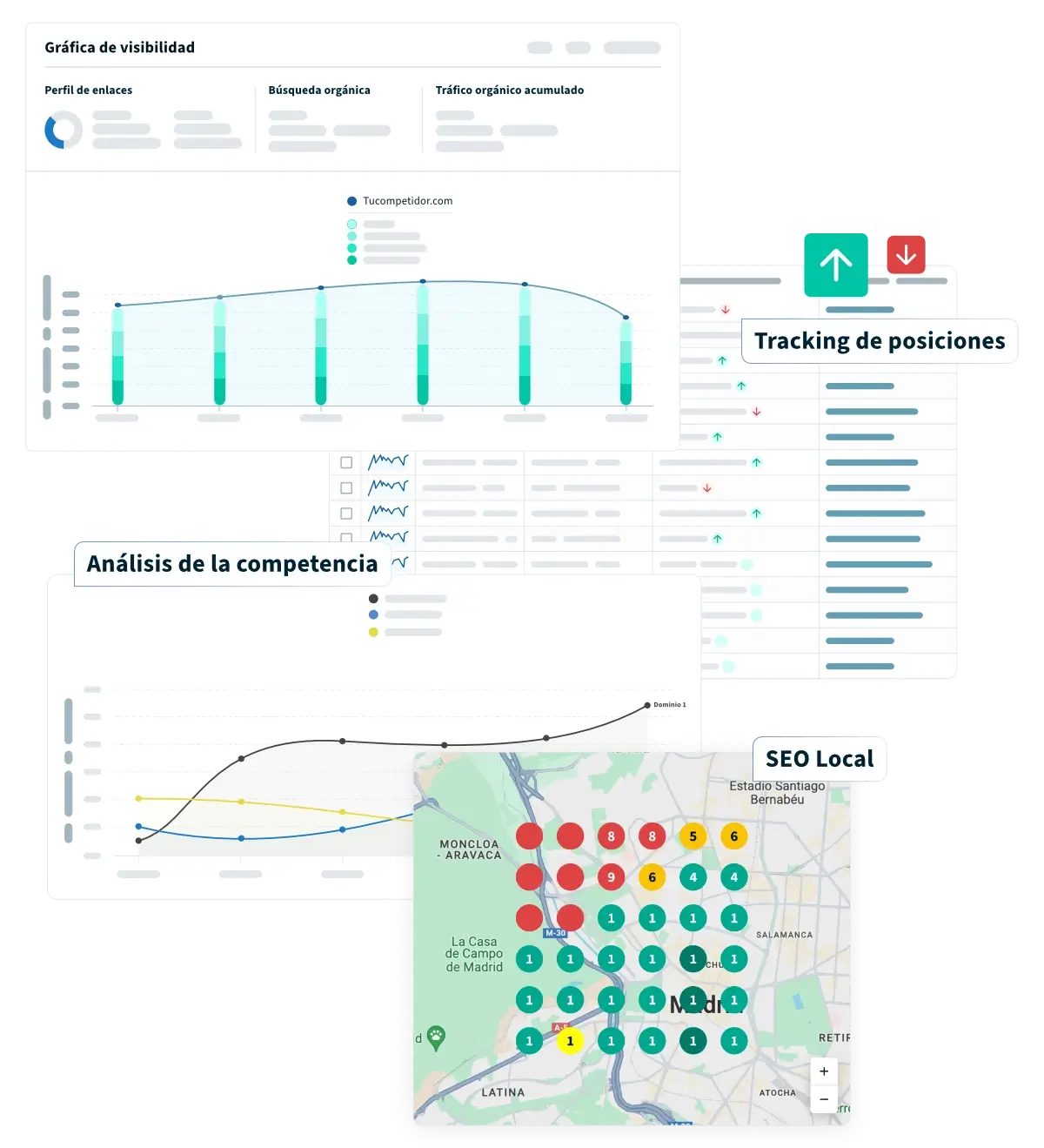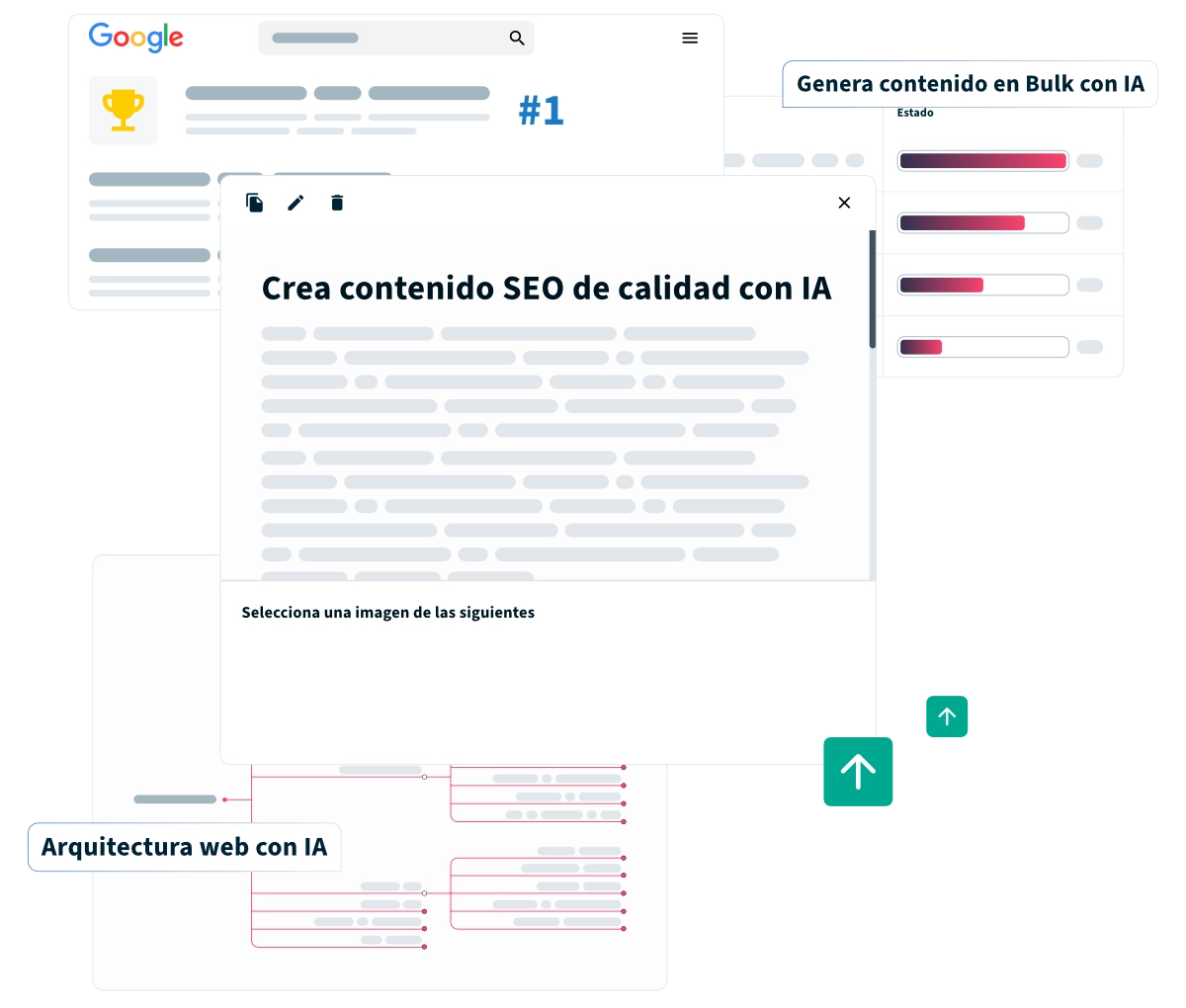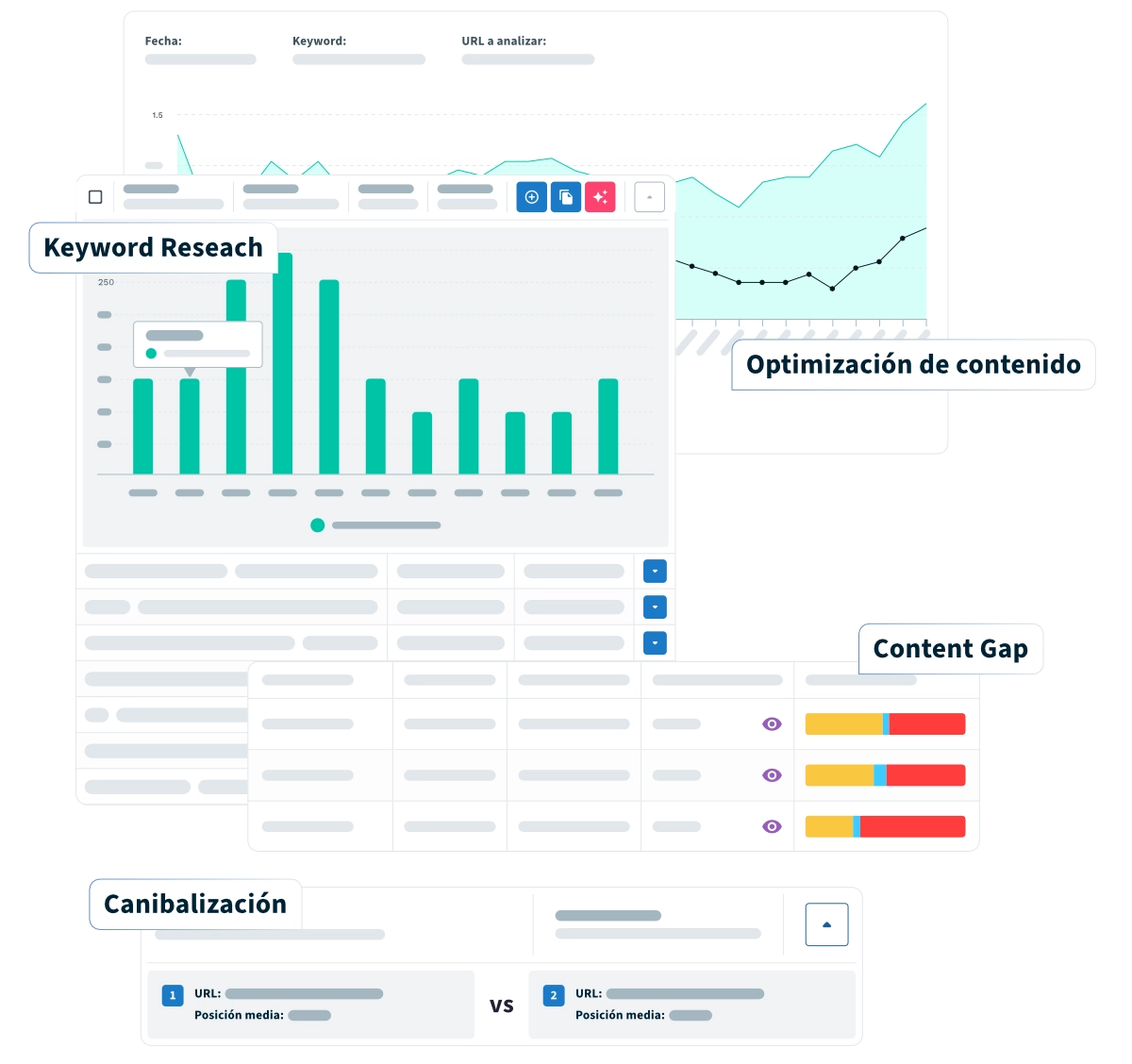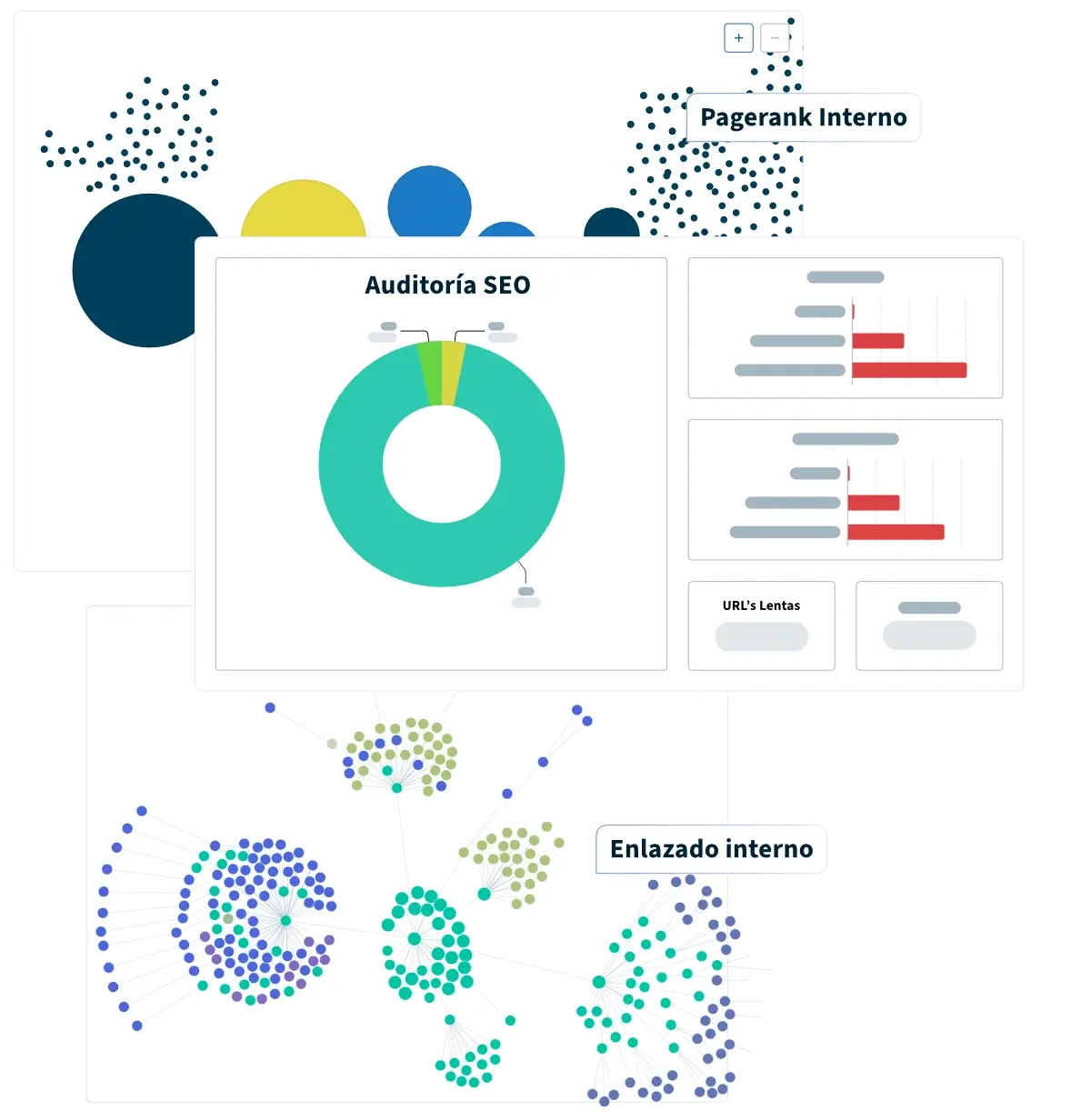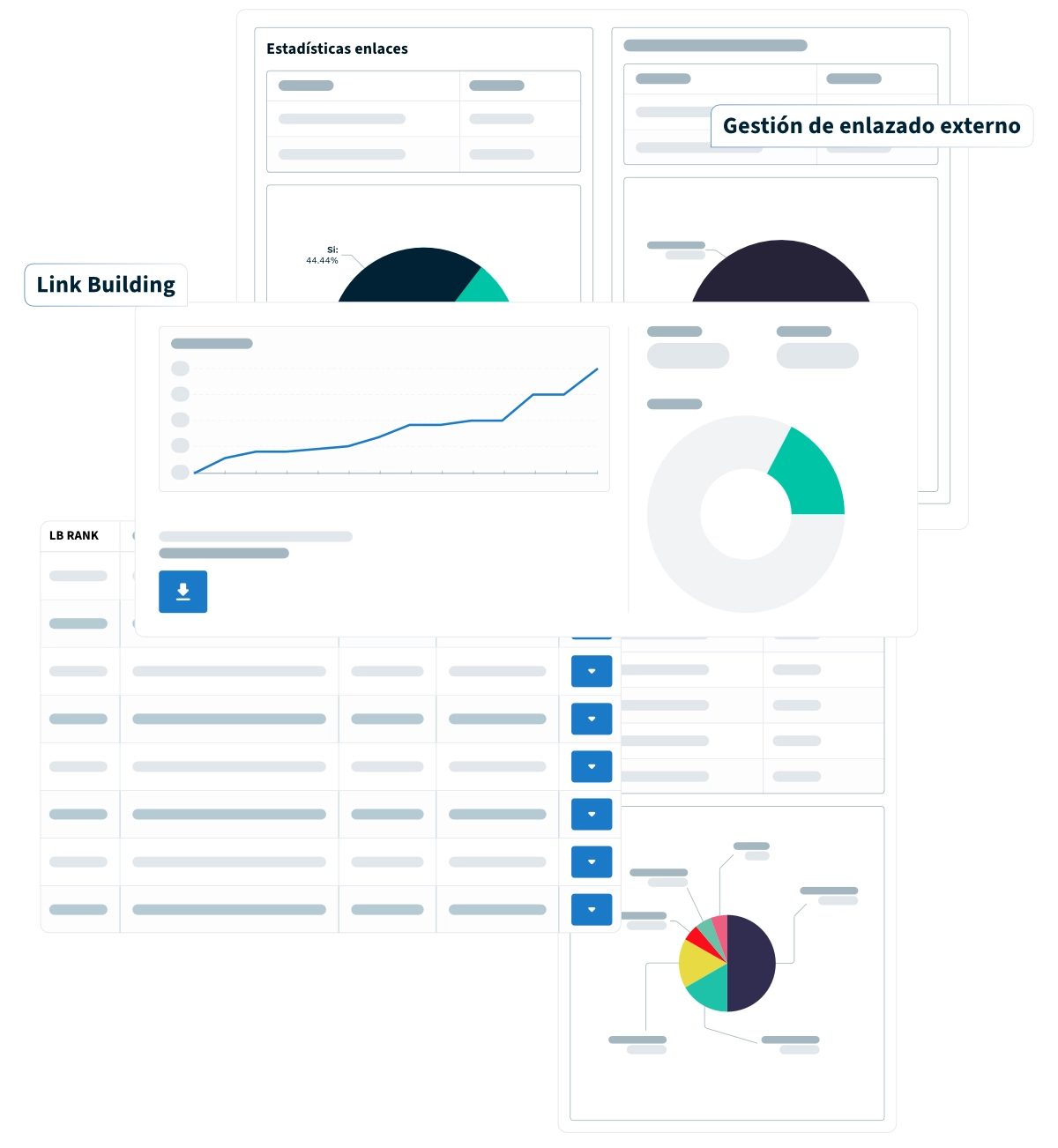Distribute the power to the most important URLs of your website, improve your ranking and sell more.
Get a complete graph of the movement of your competitors for a keyword, with DinoRANK's position tracking.

It often happens.
You work on different SEO techniques, but your website doesn't rank well and doesn't make you the money you expected.
Internal Pagerank is the transmission of authority, or strength, from one link to another.
Not managing the internal pagerank of a web page is a very common mistake. very common mistake that directly affects the performance you (or your client) expect from that digital (or your client) of that digital project.
In fact, knowing how to work it is one of the SEO techniques that generates the most benefits.

Increase traffic to the URL you are interested in

Improves user search intent

Google sees you in a better light

Increase your sales
The Internal Pagerank function gives more strength and authority to the most relevant or hardest to rank URLs. that are more relevant or more difficult to position
How Internal Pagerank works
-
Select the project you want to work on and click on Internal Pagerank.
A graph of balls appears. In it you can see and understand in a very visual way how the SEO strength or link juice is being transmitted from one link to another on your website.

The black ball is the home page, from which all other URLs are derived.
The larger a ball is, the more force it has.
The colors indicate those that are grouped or linked.
If you place the cursor over a ball, you can see:
-
The URL
-
The pagerank
-
Your distance to the home
If the URL you want to work with is 1 click away from the home page, all the power of the home page goes directly to that URL.
So, the more clicks on a link in the home page, the more the SEO strength is diluted.
And this link juice also depends on the links that URL is receiving.
In this ball chart, you can also see if the distribution of strength between the URLs of your website is balanced or not.
-
List of all URLs
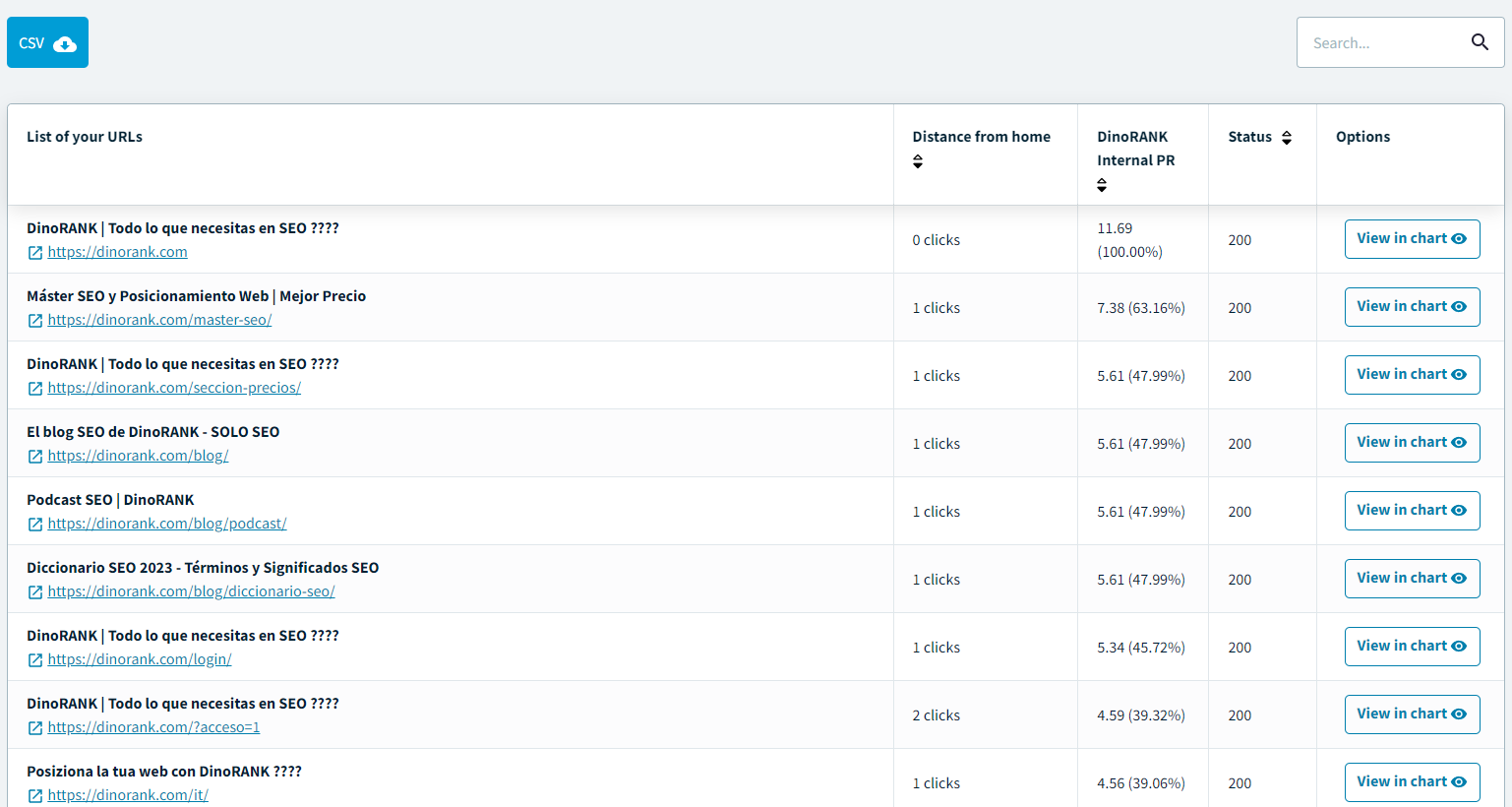
In this list you can see different data to improve the Internal Pagerank of your website:
-
The distance of these URLs from the home page, their internal pagerank and their status (200 or 3xx).
-
By clicking you can see the graph of each URL.
-
If you click on it, Dinorank takes you to the internal linking function which is the one that is complemented by internal pagerank.
-
Here you see the URLs pointing to it so you can understand how the internal linking is working and the way the force is transmitted.
-
Below is the detail of all the internal linking (you can see it in more detail on the Internal Linking page).
With all this data you can choose how to convey the strength, how to make the internal linking structure of your website.
-
It is important to do this work carefully, with sense and naturalness to provide value to the user, responding to their search intent and showing Google how your content is related.
-
You can see if there are too many links and if it is convenient to make groupings by cluster or by subject, to offer a more orderly structure to Google and to your user.
-
And you will also understand why some URLs receive more traffic than others.
-
Through these graphs you can find out at a glance, what is the problem with the transmission of force between the URLs of your website.
By link sculpting, you are sculpting the web architecture of your site and you will gradually alter the relevance of that URL based on the strength it receives.

Altering the strength of a URL with the Internal Pagerank is vital for Google to know which are the most important parts of your site.

Work on the transmission of authority and increase the chances of positioning the content that most interests you on your website.






